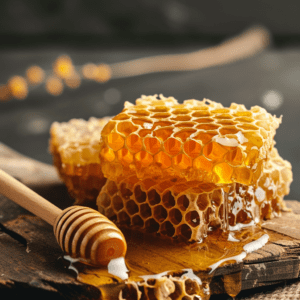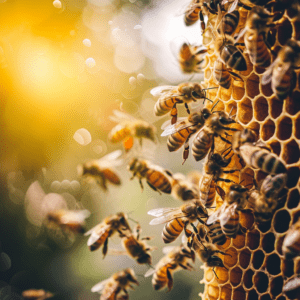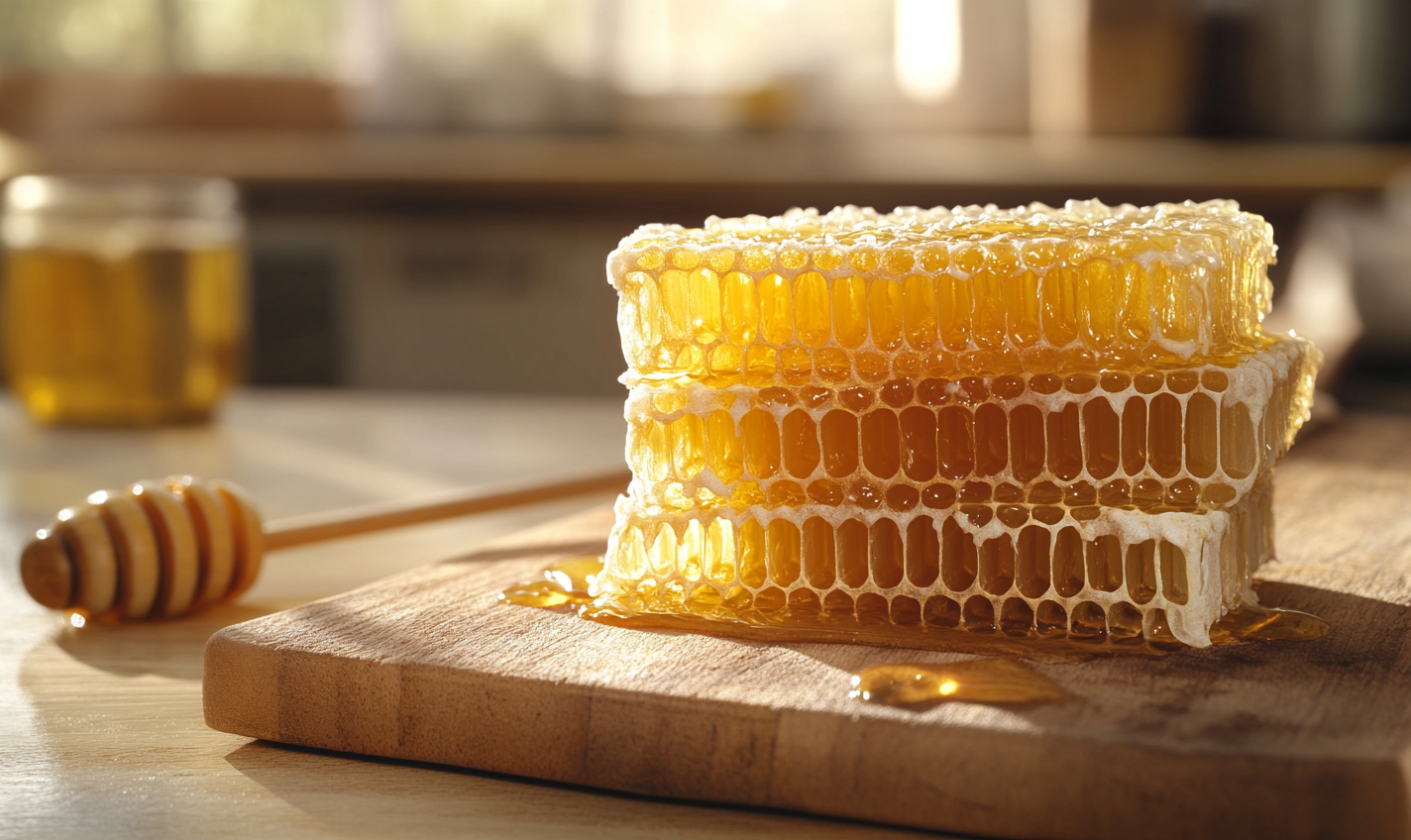Honeycomb is a natural product made by bees, consisting of hexagonal wax cells filled with raw honey. Known for its sweet, rich flavor and unique texture, honeycomb is often enjoyed as a treat on its own, spread on toast, or paired with cheeses. Despite honey’s well-known longevity, many wonder whether honeycomb can spoil and how best to store it to maintain its quality. In this guide, we’ll explore how long honeycomb lasts, how to tell if honeycomb has gone bad, and the best practices for storing it, whether it’s opened, unopened, or even cooked with other ingredients.

Does Honeycomb Go Bad?
Honeycomb, much like raw honey, is naturally resistant to spoilage. However, it can deteriorate in quality if not stored properly. Over time, honeycomb can crystallize, which is a natural process that doesn’t indicate spoilage but may affect texture. That said, if exposed to moisture or contaminants, honeycomb can develop mold, particularly in the wax. When honeycomb goes bad, it may lose its characteristic flavor and sweetness, and the wax can become brittle or discolored.
How Long Does Honeycomb Last?
Unopened honeycomb can last indefinitely if stored properly at room temperature in a dry, cool place. However, once opened, it’s best to consume it within a few months to enjoy its optimal flavor and texture. If refrigerated, opened honeycomb can last up to a year, but freezing can extend its life further to about two years. The key is to keep it sealed tightly in an airtight container to prevent moisture from affecting the quality of both the honey and the wax.
How Long Can Honeycomb Sit Out?
Honeycomb can safely sit out at room temperature for extended periods, as long as it is kept in a cool, dry place. However, if exposed to moisture, it can start to degrade. Therefore, it’s important to store honeycomb in a dry environment, away from direct sunlight and heat sources. If left out in humid conditions for too long, the honey may begin to ferment, and the wax may soften, leading to potential spoilage.
How To Store Honeycomb Safely
To keep honeycomb fresh, it’s best to store it in a cool, dry place, away from direct sunlight. If the honeycomb is unopened, it can last indefinitely at room temperature. Once opened, honeycomb should be kept in an airtight container to prevent moisture from seeping in, which can cause mold growth. If you prefer to refrigerate it, ensure that it’s tightly sealed to prevent the absorption of other odors from the fridge. Freezing honeycomb is also an option for long-term storage; it can be frozen for up to a year without significant loss of quality. When using honeycomb in recipes, consider its high sugar content, which acts as a preservative, helping it stay fresh even when mixed with other ingredients.
Signs Honeycomb Has Gone Bad
- Appearance: Fresh honeycomb has a golden color and a smooth texture. If the wax appears cloudy, dark, or discolored, it may have begun to spoil.
- Smell: Honeycomb should have a sweet, floral scent. If it smells sour or musty, this could be a sign of spoilage, particularly if the honeycomb has absorbed moisture.
- Texture: Over time, honeycomb may crystallize, making the honey grainy and the wax brittle. This is a natural process and not necessarily a sign of spoilage. However, if the wax becomes overly hard or develops a strange texture, it might be time to discard it.
Most Asked Questions About Honeycomb
- How long does honeycomb last?
- How to tell if honeycomb is bad?
- Can honeycomb go bad?
- What happens if you eat spoiled honeycomb?
- How to store honeycomb to keep it fresh?
The Sweet Tradition of Honeycomb

Honeycomb has been harvested by humans for thousands of years, revered not only for its sweet, golden honey but also for the edible wax. Historically, honeycomb was used as a natural sweetener and as a base for various medicinal preparations. The practice of beekeeping, known as apiculture, has been refined over centuries, making honeycomb a widely available and cherished delicacy in many cultures.
Today, honeycomb remains a popular choice for those who appreciate natural, unprocessed foods. Its unique texture and flavor are enjoyed in a variety of ways, from being eaten raw to being used in cooking and baking. Whether you’re savoring a piece straight from the hive or incorporating it into your favorite dishes, honeycomb offers a delicious connection to the ancient traditions of beekeeping and the natural world. For more details, you can visit the Honeycomb page.
